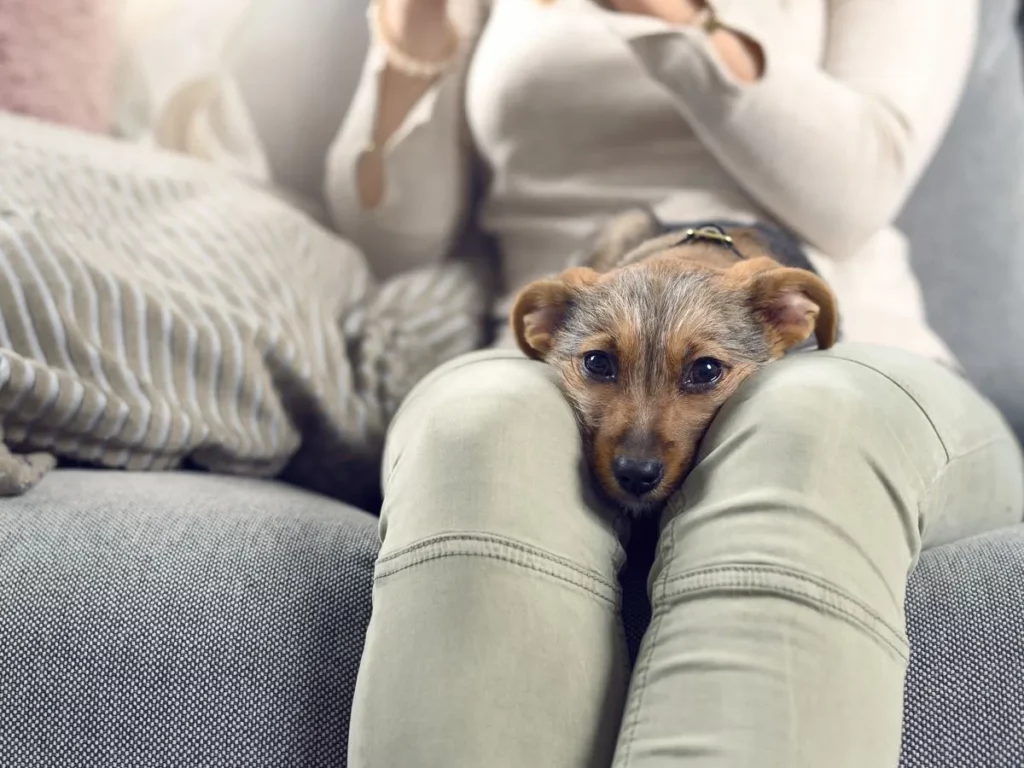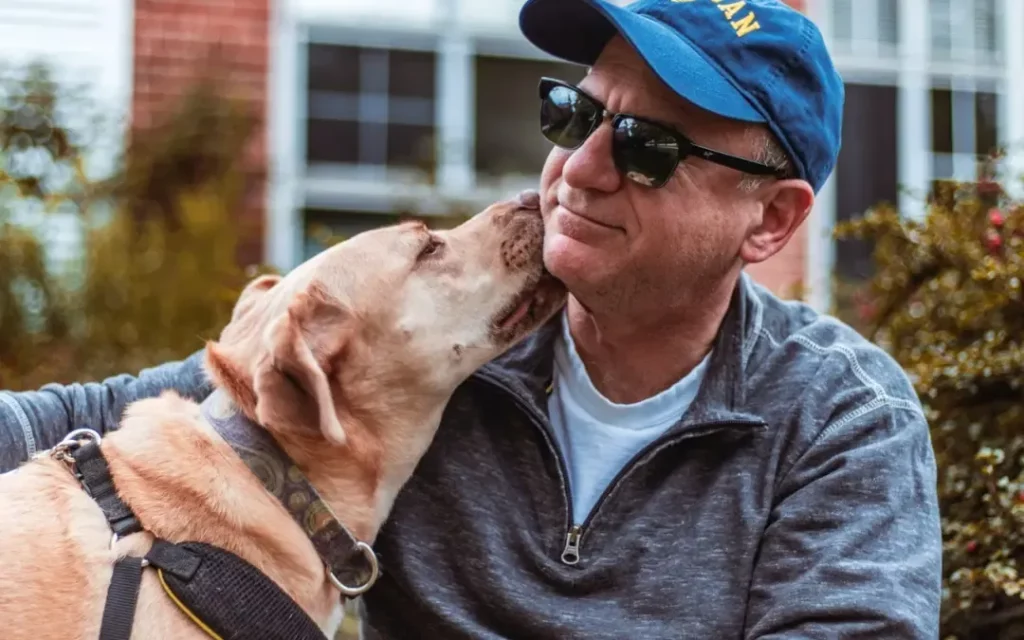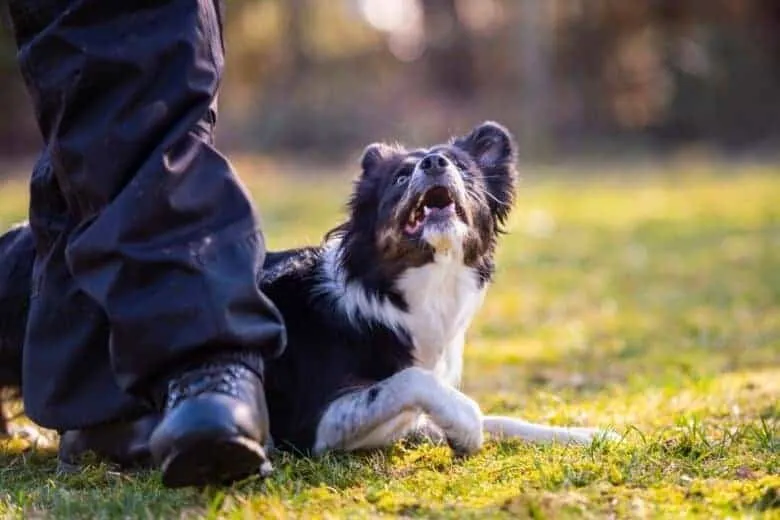Are you a dog owner who wants to know the signs that indicate your dog is proactive or you? Keep reading to know the various signs your dog is protective of you.

Dogs, known for their loyalty and devotion, often exhibit protective instincts towards their owners.
Furthermore, understanding the signs your dog is protective of you is crucial for fostering a healthy relationship with your dog and ensuring the safety of both you and others.
Here, you will get to know the key signs that your dog is acting as a devoted guardian.
Signs Your Dog is Protective of You

Let’s delve into the various signs that indicate your dog is protective of you.
1. Your Dog Always Exhibits an Alert Posture
Dogs, being keen observers, have an innate ability to sense potential threats.
One clear sign of protectiveness is an alert posture. When your dog stands tall, ears perked, and body tense, it’s a signal that they’re on high alert.
Furthermore, recognizing this posture allows you to be aware of your surroundings and any potential dangers.
2. Your Dog Often Gives You an Intense Gaze
The saying “the eyes are the windows to the soul” holds true for dogs as well.
A dog’s intense gaze is a powerful indicator of protectiveness.
Whether they are watching over you or assessing a situation, the focus in their eyes communicates a deep sense of loyalty and guardianship.
Different breeds may express protectiveness in varying ways through their gaze, making it essential to understand your dog’s unique signals.
3. Noticing Your Dog With Raised Hackles
The sight of a dog with raised hackles might initially be intimidating, but it’s a sign that shouldn’t be misunderstood.
Raised hackles indicate a heightened emotional state, and in the context of protectiveness, it often suggests that your dog is ready to defend.
However, it’s crucial to differentiate between protective hackles and those raised due to fear.
Knowing the distinction ensures you respond appropriately to your dog’s needs.
4. Your Dog Often Keeps a Raised Tail
A dog’s tail is a versatile communication tool, and its position can reveal a lot about their emotional state.
When it comes to protectiveness, a raised tail may signal alertness, while a tucked tail might indicate fear or submission.
Furthermore, understanding your dog’s tail language, along with considering their breed and individual temperament, allows you to interpret their protectiveness accurately.
5. Your Dog Often Makes Warning Barks
Dogs communicate through barks, and when it comes to protectiveness, there are specific barks that serve as warnings.
These barks may sound different from their usual playful or territorial barks.
Recognizing the nuances in your dog’s vocalizations enables you to distinguish between a protective warning and other types of barking.
6. Your Dog Exhibits a Growling Behavior
Growling is a natural behavior that can have various meanings.
In the context of protectiveness, growling often signifies a dog’s loyalty and readiness to defend.
Understanding when your dog growls out of protectiveness versus fear is essential for interpreting their intentions correctly.
In addition, a protective growl is a sign of a dog that views you as their cherished companion.
7. Noticing Protective Stance From Your Dog
Dogs have a distinct way of physically positioning themselves when they sense a need to protect.
Furthermore, this protective stance may involve standing between you and a perceived threat or adopting a posture that communicates readiness for action.
Being able to identify when your dog takes a protective stance allows you to appreciate their instinct to keep you safe.
8. Noticing Your Dog’s Possessiveness of Toys or Food
Protectiveness extends beyond guarding against external threats; it can also manifest in how dogs handle their possessions.
If your dog displays possessiveness over toys or food, it’s a sign of their desire to safeguard what they consider valuable.
Also, balancing this behavior with proper training ensures a healthy expression of protectiveness without negative consequences.
9. Protective Around Strangers
While having a protective dog is comforting, it’s essential to observe their behavior around strangers.
Dogs that are overprotective in unfamiliar situations may exhibit aggression or excessive territorial behavior.
In conclusion, as a dog owner, proper socialization and training are key to managing protectiveness and ensuring your dog remains well-behaved in various settings.
Related Searches:

Leave a Reply